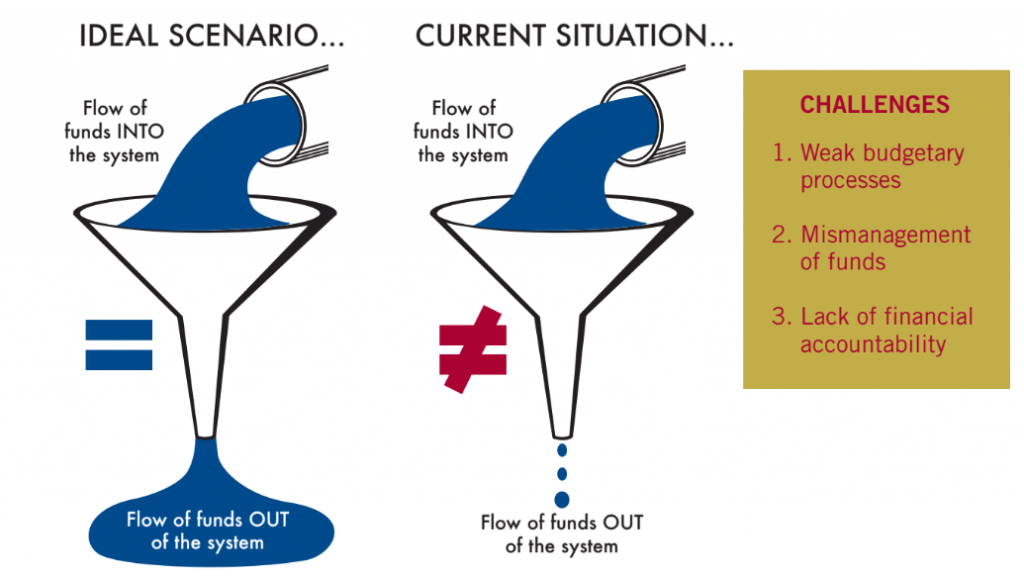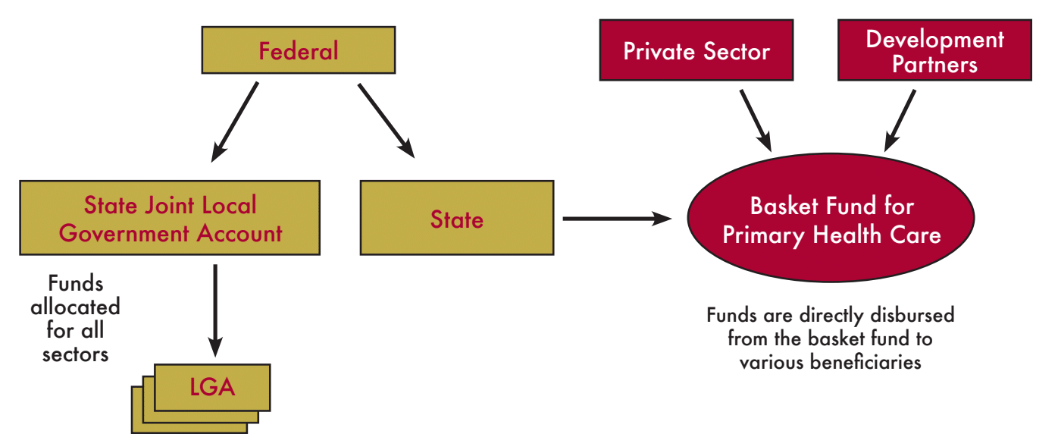Basket Funds: A Pooled Arrangement to Finance Primary Healthcare Delivery and Address the Funding Flow in Nigeria
Key Messages
- Basket funds are a mechanism for pooling funds from various sources, typically governments, donors and the private sector to support priorities and ensure adequate resource allocation for agreed upon program areas.
- In Nigeria, select states established basket funds to address barriers to primary health care financing, resulting from inconsistent prioritization of health, weak budget implementation, and lack of transparency and accountability in the use and allocation of public resources.
- Early experiences from two states in Nigeria, Zamfara and Kano, indicate that basket funds help ensure the availability of funds to implement primary health care plans, and also enhance accountability while creating transparency in how, when, and where funds are disbursed.
- With time and evidence of success, basket funds have the potential to address primary health care financing in Nigeria and other countries facing similar challenges.
Introduction
This paper describes the basket fund mechanism as a potential remedy to the prevailing concerns about availability and allocation of PHC budgets in Nigeria and reviews how these funds have changed PHC financing and program implementation in states where they are already operational. Finally, this article considers the possible advantages and disadvantages of basket funds and examines any foreseeable barriers to widespread country adoption.
Flow of Funds in the System:

Basket Funds as a Potential Solution to Address PHC Financing and the Flow of PHC Funds
A basket fund is a pooled fund, typically from government, donors and private sector, that is channeled into a specific sector, for example, healthcare. Basket fund participants agree upon the priorities and allocate resources to selected program areas a priority. Similar to the process implemented in the education sector, healthcare basket funds may draw directly from the SJLGA account for PHC and interested donors and the private sector contribute directly to the basket fund
Current Flow of Funds for PHC Through a Basket Fund

Financial Management Framework for Basket Funds
The financial management framework consists of two basic components that improve PHC funding and promote accountability: (i) an annual and/or multi-year budgeting process and (ii) an expenditure and disbursement plan.
i. Annual and Multi-Year Budgeting ProcessOutlining and agreeing upon a budget for the basket fund is a fundamental step of the financial management framework. Two main factors drive the size and scope of the basket fund budget: 1) the PHC priorities of the state and local governments, and 2) the availability of funding. Balancing these factors require reassessing immediate needs based on impact and feasibility, and finding common ground among all participants.
ii. Expenditure and disbursement planBudget allocations from the state basket fund are executed through an expenditure and disbursement plan, which explicitly delineates the program activity and responsible officer for each disbursement. Previously, budget allocations were not specified for activities nor were they disbursed to program officers, leaving room for mismanagement of funds. With the basket fund, allocations are made using a direct disbursement mechanism (DDM), where program funds are directly channeled from the primary basket fund account to the bank accounts of different program entities at the state, local and health facility levels. In addition, two measures are put in place to safeguard against misuse of funds at the beneficiary level. First, each bank account is required to have two co-signatories, and second, funds are only disbursed once the previous tranche of unused funds are returned. Where direct disbursement is not possible, local accountants or financial clerks are leveraged to ensure timely accounting, disbursement and retirement of new and unused funds.
Read the Full Report and Supplementary Materials Here:
Resource Type:
Report
Practice Areas:
Coverage & Equity, Economics & Finance, Policy Engagement, Technical Advocacy
Location:
Nigeria
Target Population:
Adult, Child
